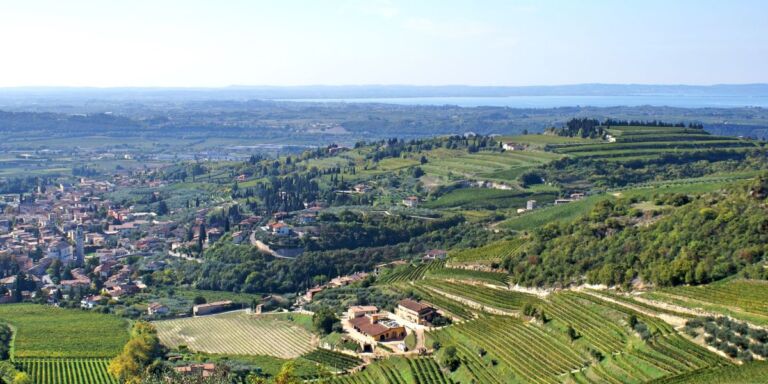I don’t want to alarm you, but there’s a quiet revolution going on in Spain. You’re not going to see armed militias marching across the country’s arid plateaus and craggy sierras, but change is coming nevertheless – albeit to the way wine is made rather than to the political system.
For many years, quality in Spanish wine has been measured by the amount of oak used and by the duration of the ageing process. The traditional equation is simple – the longer the wine is matured, and the more overt the oak, the higher the wine’s status in the official hierarchy of classification. But many of the country’s younger winemakers are beginning to question that old gold standard, and are turning, instead, to the creation of fresher, more aromatic wines that are designed to reveal their terroir rather than their cooperage.


One of the areas spearheading the insurrection is the Sierra de Gredos, a mountainous region situated about 100km west of Madrid. It’s a familiar story: a long-neglected area once best known for its production of bulk wines (and therefore ignored by the country’s most prestigious producers) is rediscovered by young winemakers who have been priced out of more heralded regions. There, they stumble across a treasure trove of old vines and adapt these former workhorses to the production of complex, refined wines.
It sounds like a fairy story, but that’s pretty much exactly what happened to Javier Garcia, one of the four co-owners of 4 Monos (which translates as “four monkeys”), a rising star of the Sierra’s viticultural scene. “We met while we were hiking in the Gredos,” says Garcia. “David Moreno, who was born in the region asked me and Laura [Garcia’s wife and fellow winemaker] to help him save a vineyard he’d inherited from his grandfather and which his aunt wanted to uproot.”
Cast aside any preconceptions that these are hefty, old-school Garnachas
The twist in the tale is that the vineyard in question wasn’t planted with the Garnacha vines with which the Sierra de Gredos is most strongly identified, but with centenarian Albillo vines instead. It wasn’t that long ago that this little-known variety was in danger of disappearing from the Spanish portfolio altogether, but a growing number of winemakers are championing it with enthusiasm. “It’s a special variety that’s at the heart of our project,” says Garcia. “The palate is structured, creating a sensation that’s similar to tannins, almost like a red wine. It also has a salty minerality that gives it freshness, and when it’s fully ripe it has a honeyed, floral character. It’s a bit like a Viognier, but without the heaviness.”
If Albillo is at the heart of the 4 Monos project, Garnacha may well be its soul. 4 Monos has six reds in its portfolio, and although a couple of them are tinged with a touch of old-vine Carignan, Garnacha is the major player. Cast aside any preconceptions that these are hefty, old-school Garnachas, hot with alcohol and sweet with oak. Garcia revised his winemaking style a few years ago, shortly after he was introduced to wines from the cooler climes of the Loire, Jura and Burgundy. “I began working here with a Bordelais view of winemaking, creating wines with a rich, concentrated style,” he says, “but came to a realisation that these northern wines gave us more pleasure than the heavier wines we were drinking.”

As a result, the monkeys changed their viticultural direction. “Our focus is now on freshness and minerality,” says Garcia. “It’s not easy – you’ve dedicated a lot of care and time to finding the perfect date to harvest, and two or three days either way can make all the difference to the style of wine you end up with. If you wait for perfect tannins, you can completely lose the beautiful floral perfume of these grapes and end up with 17% alcohol and very heavy wines. Harvest should be about finding the perfect balance between flavour, tannin and acidity.”
Luckily, says Garcia, the Sierra de Gredos provides the perfect environment for enhancing the perfumed side of Garnacha’s nature. “The vineyards, which are linked to the sierra system, are planted at between 800 and 1,100 metres of altitude. And the climate, which should be continental, is actually Mediterranean, so winter isn’t harsh, while summer nights are cool, with a big temperature difference from the day – all of which helps maintain freshness and aromatic expression.”

Garcia and his partners then seek out subtle differences in the terroir in order to create nuances in their wines. The three village wines are planted at different altitudes and with different levels of solar exposure to create distinctive expressions, from the perfumed Cien Lanzas, whose vines are planted at up to 960 metres on grey and pink granites, to the fuller-bodied, structured Aguja del Fraile, a vineyard composed of shallow grey granite, and the richer Tierra de Luna, whose more Mediterranean meso-climate lends the wine power and ripeness of fruit. The line up is completed by the youthful, fruity GR10, an assemblage of the various vineyard parcels, and two single-vineyard wines that express their individual terroirs with great precision.
“We are part of a new wave of Spanish winemakers,” says Garcia with pride. “It’s nice to think that we can be part of the revolution, moving away from those over-ripe wines aged in oak that were once thought to be the only way of making quality wines in Spain.”


4 Monos is distributed in the UK by Justerini & Brooks









